These Ajinomoto frozen Japanese dishes from France baffled our Japanese reporter【Taste test】
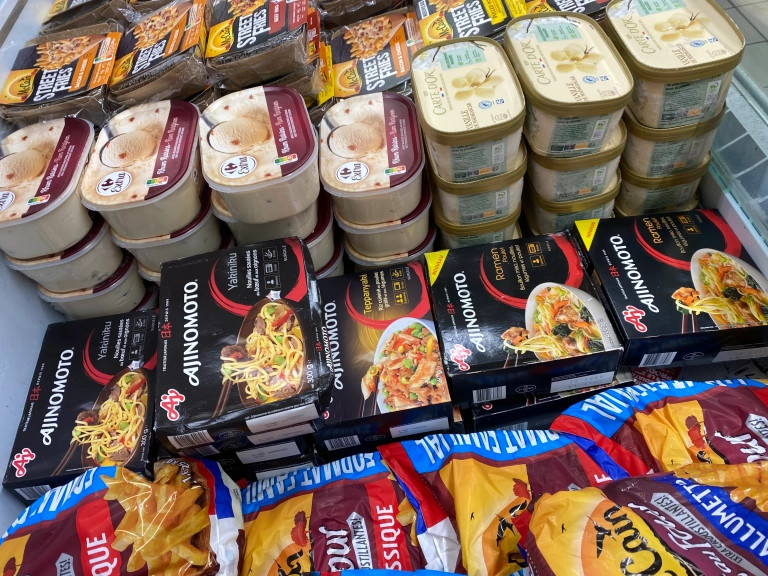
Expectations were not met–in many ways.
Ajinomoto is a top brand of frozen food in Japan, and it’s also sold in various countries across Europe. Our Japanese-language reporter and world traveler Ikuna Kamezawa has frequently seen their gyoza while traveling, but she’s also found a selection of Ajinomoto foods that came in stylish black boxes, including “Yakiniku” and “Teppanyaki.” Ikuna says these weren’t very hard to find; if you check in a large supermarket or an Asian market, you’d probably be able to find them throughout Europe. She found hers in France.
But there was something funny about these frozen meals. Though they had Japanese names of real Japanese foods, the pictures didn’t match the names at all. The “Yakiniku” box–which should have shown slices of flame-grilled meat, with maybe some rice on the side–clearly had a picture of yakisoba, or stir-fried noodles, and the “Teppanyaki” box–which should have looked like flat-grilled meat and vegetables, looked like fried rice.
What was that about? Ikuna couldn’t help but wonder, so she bought a box each of three different varieties to see what they actually looked like and tasted like on the inside.
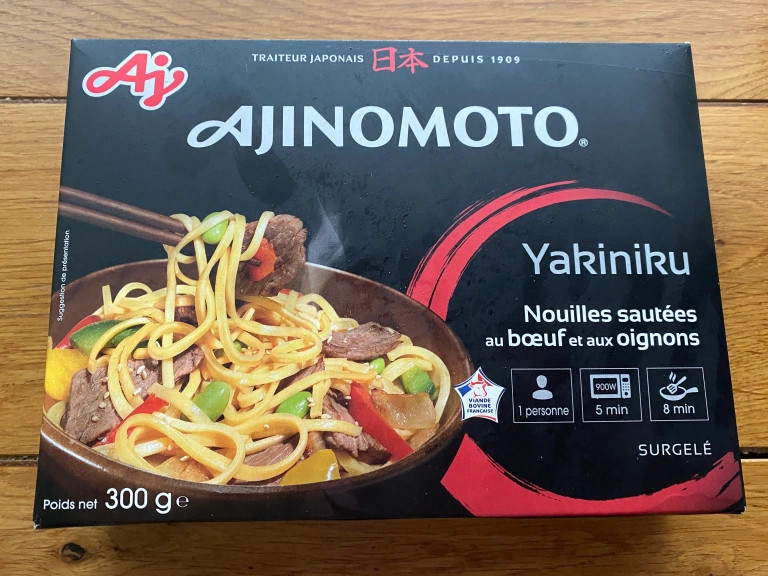
She started with “Yakiniku”, which cost 4.25 euros (613 yen/US$4.47). Inside was a billowing plastic bag filled with what looked like noodles and vegetables.
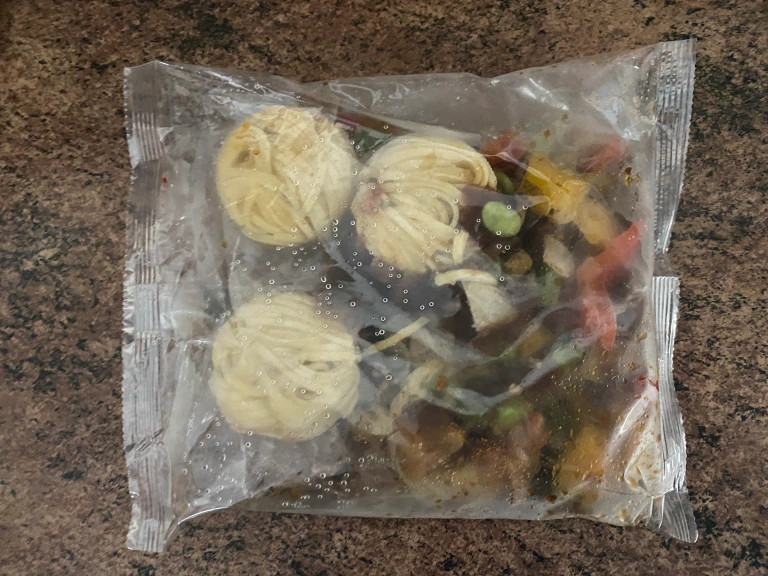
Ikuna poured the contents into a bowl…
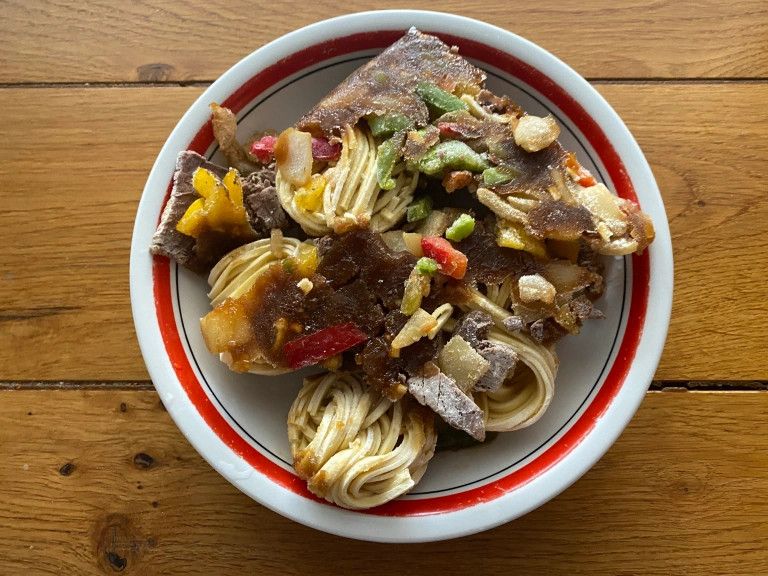
Then put it in the microwave for five minutes.
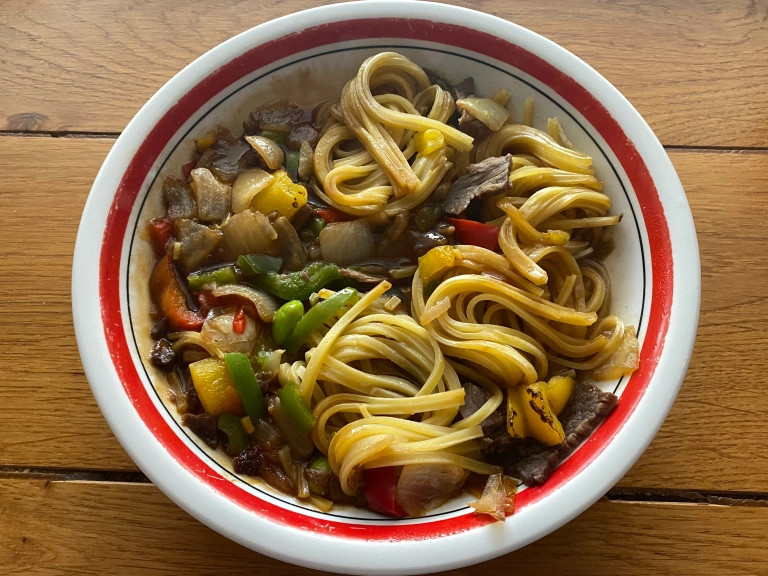
The finished product looked nothing like yakiniku, despite the slices of beef it contained. Any way you looked at it, it was a noodle dish, and perhaps not even a Japanese-style noodle dish, based on the ingredients.
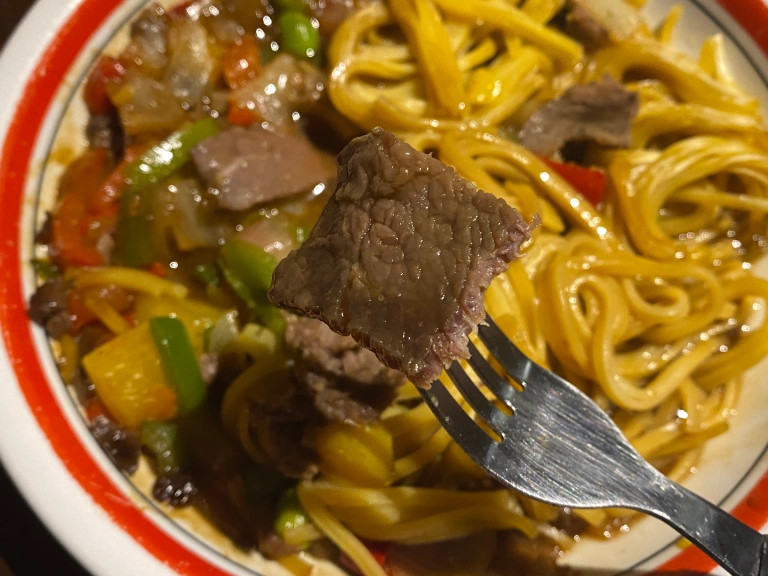
Maybe they chose to call it yakiniku because of the beef slices? The beef wasn’t as tender or delicious as yakiniku and felt more like cheap cuts grilled over low heat for far too long (they were dry as bone). Besides that, the dish included slices of three kinds of bell peppers and onions.
If it had been labeled something less specific like “Chinese-style saucy noodles”, Ikuna probably wouldn’t have minded it so much. But since it was calling itself “Yakiniku”, Ikuna couldn’t help but feel it was just all wrong. Why did Ajinomoto decide to give it that name? Instead of answering her questions, this frozen meal only deepened the mystery.
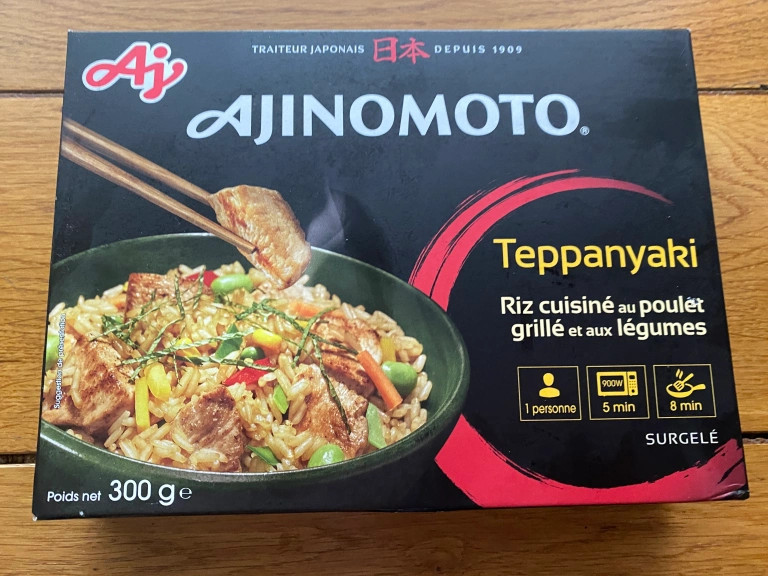
The “Teppanyaki” dish was the same price of 4.35 euros, and like the “Yakiniku”, the picture on the package did not match the name. It was clearly fried rice.
The dish contained plenty of ingredients, including chicken, two kinds of bell peppers, edamame, green peas, carrots, onions, and corn. The rice looked like the kind of rice popular in Southeast Asian countries like Thailand: long and thin, as opposed to the short-grain rice common in Japan.

While it looked pretty good, the flavor was so weak, almost as if they had entirely forgotten to salt it. The chunky chicken was tasty, but Ikuna couldn’t help but think that basing the name of “teppanyaki” on this chicken alone was a bit of a stretch.
On the other hand, it is possible to cook fried rice on a teppan, or a Japanese griddle, and perhaps this is a common image of Japanese cooking based on the types of Japanese restaurants that are popular overseas. However, to Japan-native Ikuna, the foods that most come to mind with the word “teppanyaki” are meat and fish. She couldn’t help but feel sad that this is what Europeans might believe is Japanese teppanyaki.
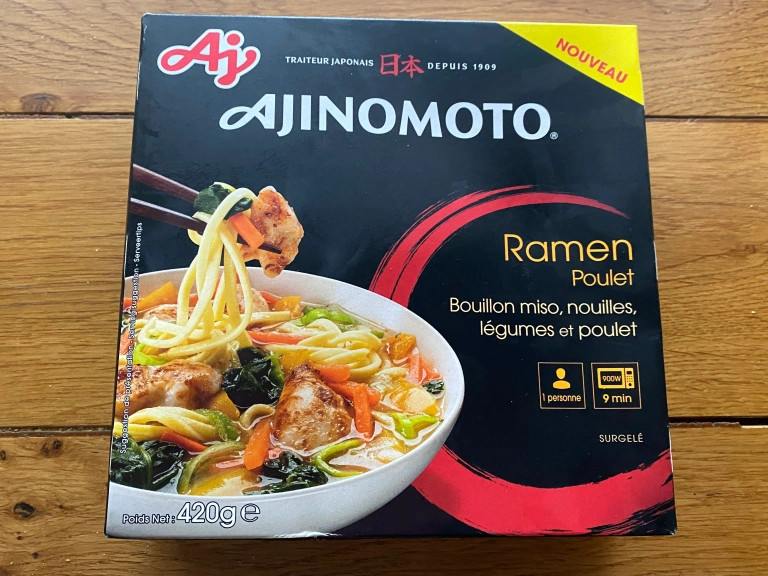
The last one that Ikuna tried was “Ramen Poulet” (chicken ramen), which was 3.5 euros (or 505 yen.) In this case, the packaging did actually look like ramen, which was a relief.

This one also had bell peppers in it. Ikuna had to wonder, do Europeans really like bell peppers that much? Japanese cuisine, for reference, rarely uses bell peppers, though you might sometimes find them in western-style dishes served in Japan.
The broth was…unique. It tasted a bit like Japanese tonkotsu, or pork bone broth, but it also felt a bit like a thick and creamy soup, or a miso soup with potatoes. Ikuna is used to ramen tasting differently in other countries, but in most cases, the ramen she tried tasted good, just in an unexpected way. The flavor of this soup, sadly, was too weak for her; if she hadn’t been really hungry, she probably would never want to eat this.
This further served to perplex Ikuna, who had to assume that Ajinomoto, originally a Japanese company, should have the know-how to make a really good frozen ramen, and instead they produced this.
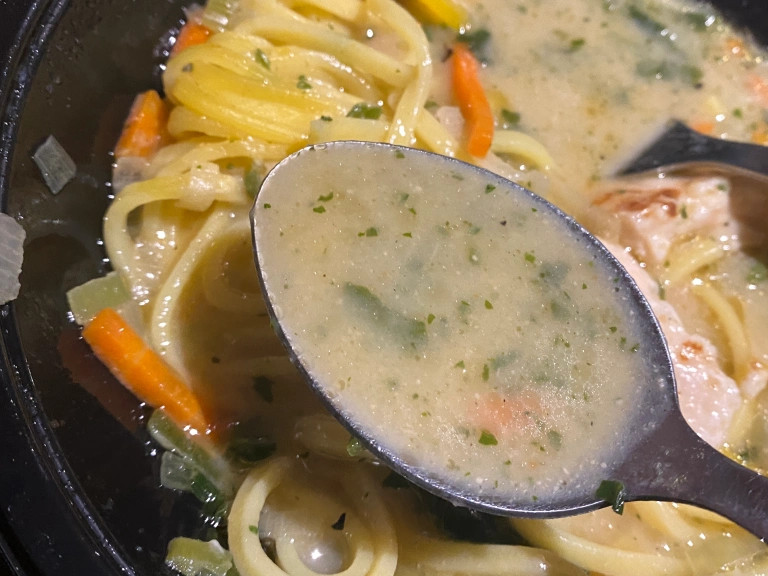
Ikuna could only assume that these dishes were made more to suit European tastes, which was perfectly fine, as she was in Europe. Despite the mysterious nature of the packaging not matching the name of the product, and the flavors not quite meeting her expectations, Ikuna had to say she had an interesting time taste-testing them. She’ll always continue to try Japanese food overseas because it’s fun, and sometimes even educational.
Images © SoraNews24
● Want to hear about SoraNews24’s latest articles as soon as they’re published? Follow us on Facebook and Twitter!
Credit:

0 comments:
Post a Comment